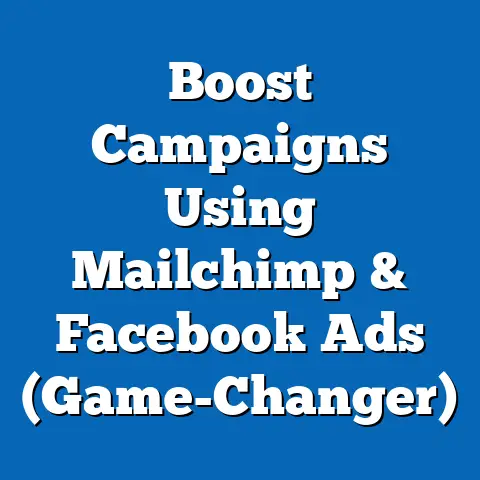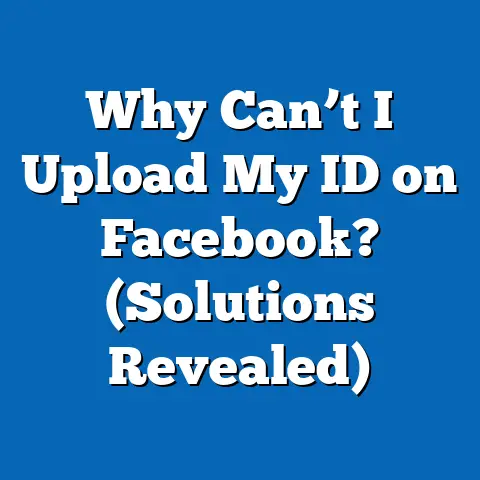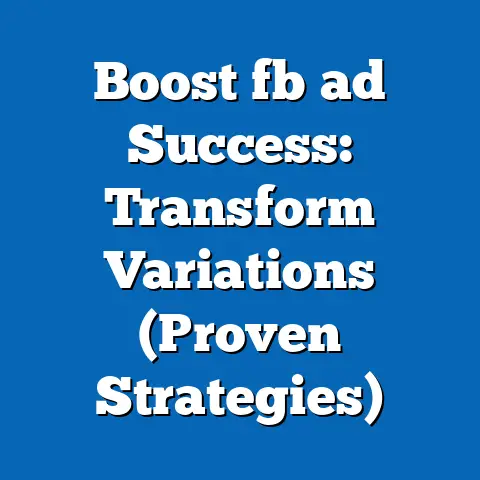Block Facebook Mobile Ads Effectively (Game-Changing Tips)
In an era defined by rapid technological advancement and pervasive digital connectivity, the intersection of generational behaviors and online privacy has become a critical area of study. As individuals across different age cohorts navigate the complexities of social media platforms like Facebook, the need to control personal data and limit intrusive advertising—particularly on mobile devices—has grown exponentially. This article begins by exploring the concept of blending styles across generations, examining how historical contexts, defining characteristics, and societal shifts shape their interactions with technology and privacy concerns, before delving into actionable, game-changing tips for effectively blocking Facebook mobile ads.
The subsequent sections will provide a deep dive into generational nuances, the evolution of digital advertising, and the cultural and economic implications of ad-blocking behaviors. By blending demographic analysis with practical strategies, this research aims to offer a holistic understanding of how generational dynamics influence digital privacy practices and how individuals can reclaim control over their online experiences.
Blending Styles Across Generations: Defining Characteristics and Historical Context
Generational blending styles refer to the ways in which different age cohorts interact, adapt, and integrate their values, behaviors, and preferences in shared spaces—both physical and digital. These styles are shaped by the unique historical, economic, and technological contexts in which each generation came of age. Understanding these blending styles is crucial for contextualizing how generations approach issues like digital privacy and mobile advertising on platforms like Facebook.
Baby Boomers (Born 1946-1964): Baby Boomers grew up in a post-World War II era marked by economic prosperity, traditional media consumption, and the rise of television advertising. Their formative years were defined by a trust in institutions and a more passive acceptance of marketing as part of daily life. As late adopters of digital technology, many Boomers view social media with a mix of curiosity and skepticism, often prioritizing personal connection over privacy concerns, though this varies widely based on individual tech-savviness.
Generation X (Born 1965-1980): Often described as the “latchkey generation,” Gen Xers experienced the transition from analog to digital worlds, witnessing the birth of personal computers and the early internet. Shaped by economic uncertainty and cultural shifts like the rise of MTV, they tend to be pragmatic and independent, valuing efficiency in technology use. While they are more tech-literate than Boomers, their approach to privacy is often reactive rather than proactive, shaped by early internet experiences where data security was less of a concern.
Millennials (Born 1981-1996): Millennials came of age during the dot-com boom and the advent of social media, making them digital natives who view technology as an extension of their social and professional lives. Events like the 2008 financial crisis instilled a sense of economic precarity, while platforms like Facebook became central to their identity expression. This generation often grapples with a paradox—sharing vast amounts of personal data online while expressing concern over privacy breaches, reflecting a blending style that balances openness with selective caution.
Generation Z (Born 1997-2012): As true digital natives, Gen Z has never known a world without smartphones or social media, growing up amidst data scandals and heightened awareness of cybersecurity. Influenced by global challenges like climate change and social justice movements, they prioritize authenticity and control over their digital footprints. Their blending style leans toward tech-savviness and skepticism of corporate motives, often leading them to adopt privacy tools and ad-blocking measures more readily than older generations.
Societal Implications of Generational Blending Styles: The interaction of these generational styles in the digital realm has profound societal implications. Older generations may defer to younger ones for tech guidance, creating a dynamic of cross-generational learning, while younger cohorts push for greater transparency and accountability from tech giants like Facebook. This blending also fuels debates over data ethics, as differing values around privacy and convenience collide, shaping public policy and corporate practices in the digital advertising space.
The Rise of Mobile Advertising and Generational Responses
With over 2.9 billion monthly active users as of 2023 (Statista, 2023), Facebook remains a dominant force in social media, leveraging its vast data collection to deliver targeted mobile ads. Mobile advertising has surged with the proliferation of smartphones, accounting for nearly 70% of digital ad spending globally (eMarketer, 2022). However, generational responses to this trend vary significantly, reflecting the blending styles discussed above.
For Baby Boomers, mobile ads are often seen as an unavoidable nuisance, with many lacking the technical know-how to block them effectively. Research from Pew Research Center (2021) indicates that only 25% of Boomers actively seek privacy tools, often relying on default settings or ignoring ads altogether. Their historical context of passive media consumption translates into a lower urgency to address digital intrusions.
Generation X, while more tech-savvy, often prioritizes functionality over privacy, with many tolerating ads as a trade-off for free content. However, their pragmatic nature means they are likely to adopt ad-blocking solutions if they perceive a direct benefit, such as faster load times or reduced data usage. Studies suggest that around 40% of Gen Xers have used ad blockers at some point (GlobalWebIndex, 2022).
Millennials, despite their heavy reliance on social media, exhibit a dual behavior—sharing personal data while expressing frustration with invasive advertising. A 2022 survey by Deloitte found that 60% of Millennials are concerned about how their data is used for ads, yet only a third take active steps to block them. This reflects their blending style of balancing connectivity with growing privacy awareness.
Generation Z stands out as the most proactive, with a 2023 report from Morning Consult indicating that over 50% of Gen Z users employ ad blockers or privacy tools on mobile devices. Shaped by high-profile data breaches like the Cambridge Analytica scandal, their blending style emphasizes control and resistance to corporate overreach, making them key drivers of the ad-blocking trend.
Cultural and Economic Factors Influencing Ad-Blocking Behaviors
The decision to block mobile ads on platforms like Facebook is not merely a technical choice but a reflection of broader cultural and economic factors that differ across generations. Culturally, the growing emphasis on individual autonomy and data rights—especially among younger generations—has shifted perceptions of advertising from a benign annoyance to a privacy violation. Movements advocating for digital literacy and data sovereignty have gained traction, particularly among Millennials and Gen Z, who view ad-blocking as a form of digital activism.
Economically, the freemium model of social media, where users trade data for access, is increasingly questioned as awareness of data monetization grows. For lower-income individuals across generations, mobile data costs also play a role—ads consume bandwidth, prompting users to block them to save on expenses. A 2021 study by the World Economic Forum highlighted that data costs disproportionately affect younger users in developing regions, further driving ad-blocking adoption.
Technologically, the accessibility of ad-blocking tools has democratized privacy protection, though adoption rates vary. Older generations may find these tools complex or unnecessary, while younger users integrate them seamlessly into their digital routines. This technological divide underscores the importance of user-friendly solutions tailored to diverse generational needs.
Game-Changing Tips to Block Facebook Mobile Ads Effectively
Having explored the generational context and societal dynamics surrounding mobile advertising, this section provides practical, actionable strategies to block Facebook ads on mobile devices. These tips are designed to accommodate users of varying technical proficiency, reflecting the diverse blending styles across generations.
1. Use Built-In Browser Features for Ad Blocking:
Many mobile browsers, such as Safari (iOS) and Chrome (Android), offer built-in ad-blocking or content-filtering options. For Safari, enable “Content Blockers” by downloading a trusted ad-blocking extension from the App Store, such as AdGuard or 1Blocker, and activate it in Settings > Safari > Extensions. On Android, browsers like Brave automatically block intrusive ads and trackers without additional setup, making it an ideal choice for less tech-savvy users like Baby Boomers.
2. Adjust Facebook App Settings for Personalized Ads:
While Facebook does not allow complete ad removal, users can limit personalized ads by adjusting privacy settings within the app. Navigate to Settings & Privacy > Settings > Ads > Ad Preferences, and opt out of data sharing with third-party partners or adjust ad topics to reduce irrelevant content. This method is particularly useful for Gen X and Millennials who may prefer a balance between privacy and platform usability.
3. Install Third-Party Ad Blocker Apps:
For more robust protection, third-party apps like AdBlock Plus or NordVPN’s CyberSec feature can block ads across apps, including Facebook. These tools often require a one-time setup and minimal maintenance, catering to Gen Z’s preference for comprehensive control. Be cautious of free apps with dubious privacy policies—opt for reputable, paid versions to ensure data security.
4. Use a VPN with Ad-Blocking Capabilities:
Virtual Private Networks (VPNs) like ProtonVPN or Surfshark offer built-in ad-blocking features (often called “CleanWeb” or “Tracker Blocker”) that prevent ads from loading on mobile devices. This solution suits users across generations, as it combines privacy protection with ad blocking. Setup is straightforward, though older users may need initial guidance.
5. Switch to Facebook Lite or Web Version with Ad Blockers:
Facebook Lite, a lighter version of the app, displays fewer ads due to reduced data usage, making it a viable option for users concerned about bandwidth. Alternatively, access Facebook via a mobile browser with an ad-blocking extension enabled, bypassing app-based ad delivery. This workaround appeals to pragmatic Gen Xers and cost-conscious individuals.
6. Disable Data Tracking on Your Device:
Both iOS and Android allow users to limit ad tracking at the device level. On iOS, go to Settings > Privacy > Tracking, and disable “Allow Apps to Request to Track.” On Android, navigate to Settings > Google > Ads, and enable “Opt out of Ads Personalization.” This reduces targeted ads across apps, including Facebook, and aligns with Gen Z’s emphasis on data control.
7. Educate Yourself on Data Privacy Practices:
Beyond technical solutions, understanding how Facebook collects and uses data empowers users to make informed decisions. Resources like the Electronic Frontier Foundation (EFF) or privacy-focused YouTube channels offer accessible guides for all generations. Cross-generational learning—where younger users assist older ones—can bridge the tech gap, fostering a shared commitment to privacy.
Societal and Workplace Implications of Ad Blocking
The trend of blocking mobile ads has far-reaching implications beyond individual privacy, influencing societal norms, corporate strategies, and workplace dynamics. Socially, widespread ad blocking challenges the freemium model of social media, potentially pushing platforms like Facebook to adopt subscription-based or alternative revenue models. This shift could democratize access to ad-free experiences but risks creating a digital divide if premium services become cost-prohibitive for some generations.
In the workplace, ad-blocking behaviors reflect broader generational attitudes toward technology and data security. Gen Z employees, for instance, may advocate for stricter corporate policies on data usage, influencing how businesses market to consumers. Conversely, older workers might require training on privacy tools, highlighting the need for inclusive digital literacy programs.
Economically, ad blocking disrupts the digital advertising ecosystem, which generated over $600 billion globally in 2022 (IAB, 2023). As more users—especially younger generations—adopt these tools, advertisers may pivot to less intrusive formats or native content, reshaping how brands engage with audiences. This evolution could benefit consumers by reducing ad fatigue but challenges small businesses reliant on affordable targeted ads.
Nuances and Diversity Within Generational Responses
While generational trends provide a useful framework, it’s critical to acknowledge the diversity within each cohort. Not all Baby Boomers are tech-averse; many have embraced smartphones and social media with enthusiasm, particularly during the COVID-19 pandemic, which accelerated digital adoption (Pew Research Center, 2021). Similarly, not every Gen Z user is a privacy advocate—some prioritize convenience over control, mirroring older generations’ behaviors.
Socioeconomic status, cultural background, and geographic location further complicate these patterns. For instance, users in regions with strict data protection laws, like the European Union under GDPR, may exhibit greater privacy awareness regardless of age. Personal experiences with data breaches or identity theft can also override generational tendencies, driving individuals to adopt ad-blocking measures out of necessity rather than ideology.
Forward-Looking Insights and Uncertainties
Looking ahead, the intersection of generational blending styles and digital privacy will continue to evolve as technology advances and societal values shift. Emerging technologies like artificial intelligence and augmented reality could introduce new forms of advertising, challenging existing ad-blocking tools and necessitating innovative solutions. Younger generations, particularly Gen Z and the upcoming Generation Alpha, are likely to lead the charge in demanding transparency and accountability from tech companies.
However, uncertainties remain. Will platforms like Facebook adapt by offering ad-free tiers, or will they double down on data collection to offset revenue losses from ad blocking? How will generational attitudes toward privacy shift as older cohorts become more tech-savvy and younger ones face new digital challenges? Public policy will play a pivotal role, with potential regulations on data usage and advertising practices shaping the landscape in unpredictable ways.
Moreover, the balance between privacy and access to free content remains a central tension. As ad blocking becomes more mainstream, society must grapple with the ethical implications of undermining platforms’ revenue models while advocating for user autonomy. Cross-generational dialogue—facilitated by shared digital spaces—will be essential in navigating these complexities.
Conclusion
This comprehensive analysis has explored the intricate relationship between generational blending styles and the growing imperative to block Facebook mobile ads effectively. By examining the historical contexts, defining characteristics, and societal implications of Baby Boomers, Gen X, Millennials, and Gen Z, we’ve uncovered how diverse experiences shape attitudes toward digital privacy and advertising. The practical, game-changing tips provided offer a roadmap for users across generations to reclaim control over their mobile experiences, from browser-based solutions to device-level tracking restrictions.
The broader implications of ad blocking extend beyond individual actions, influencing cultural norms, economic models, and workplace dynamics. While generational trends provide valuable insights, the diversity within cohorts and the unpredictability of technological and regulatory shifts remind us to approach this topic with nuance and flexibility. As we move forward, fostering cross-generational understanding and advocating for ethical digital practices will be key to ensuring a balanced, user-centric online ecosystem. Ultimately, the journey to block mobile ads is not just a technical endeavor but a reflection of evolving societal values in an increasingly connected world.






